In this complete guide, I’m going to teach you how to start a money-making blog. We will begin with the mindset you should have as a successful blogger, how to pick a lucrative niche, how to technically set up the blog (WordPress, theme, plugins, pages), how to write excellent content, how to promote it to get readers and how to monetize your blog correctly.
If you want to become a successful blogger, this information is both uplifting and depressing. It is possible to make money blogging; lots of people are already doing it.
I won’t lie and say it’s easy making your living as a blogger. Still, anyone can indeed do it, provided you have a subject you’re passionate about and the dedication to write about it long-term.I’ve created, maintained, and sold over 40 blogs so far, and I’m ready to give you the exact recipe that will guide you through creating a blog that will make you profit in several months.
Table of Contents
- 1 1. Before Starting Your Blog – Your mindset
- 2 2. How to find your niche
- 3 3. Technical stuff
- 4 4. How to Make Your Blog Secure
- 5 5. How to do planning and goals setup
- 6 6. How to create quality content
- 7 7.How to get traffic to your blog
- 8 8. How to grow your blog
- 9 9. How to do networking and community
- 10 Takeways
- 11 Conclusions on how to start a blog
1. Before Starting Your Blog – Your mindset
1.1 Be Driven By Passion, Not Money
It’s crucial to have a financial plan laid out, but it should never be your project’s primary motivator. Many blog owners are making money today because of the deep, admirable love they felt for the community’s subject matter.
You’ll hear about overnight successes in the blogging world, but that most often means that everybody on the internet realized the blog was there overnight.
That blogger has likely been going strong, writing content and working on building an audience for years. For some of that time, the blogger was probably making little to no money.
1.2 Be Ready to Work Your Butt Off
I won’t lie or sugarcoat it: Managing a blog is challenging.
In my opinion, it is best to hit the ground running by:
- Inviting you to participate: You have more connections than you realize. Just look into your Facebook profile, or politely ask your friends to help out. Offer an incentive, if you must.
- Hiring someone or asking for volunteers: If you have little to no money, places like Craigslist allow you to place unpaid gig listings.
- Staying active: Getting the blog off the ground also means answering questions and starting new topics every day, especially toward the beginning. So for an hour or two every day, check your blog and answer questions from members, delete spam, interesting post content, or ask questions that encourage your members to engage.
Now let’s officially look at how to start a blog and make money.
2. How to find your niche
A blog with a clear identity is more likely to be successful than one with a broad focus. A personal blog is about you, while a professional blog is about the topic. You can and should be personable and share your story, but only as it relates to the topic at hand.
Before you start doing anything else to start your blog, you should figure out your topic. Your niche will impact the domain name you choose, your page’s design, and your ideal posting schedule to appeal to the most readers in your area.
2.1 Research the market
Picking the right market for a new blog can be tricky. You want to find a popular topic to attract interest and earn money, but one hasn’t already been oversaturated with bloggers giving their opinions.
Finding a new perspective on a topic that people aren’t already blogging about gives you the best chance of making it in the business long-term—if it’s a field where interest exists. There are no bloggers on the topic because no one wants to read about it. The only way to know is by researching the field.
Keep in mind that you should choose a niche that you are familiar with or passionate about. It will be funny if you receive questions from your readers, and you will not know the answer, and you will have to search Google every day.
If it is something that you’re not passionate about, you will later become less and less involved in your blog, which will drive people away.
Thankfully, researching a niche has become easier over the years, thanks to the vast online communities available.
Here are the ones I recommend most:
Places to get niche ideas
Further reading: Keyword Research Guide (Tools & Tutorials)
2.2 How to decide the best niche to start a blog
The larger the interest in a given topic, the smaller the percentage of the total market share you need to capture to succeed, and the more specialized your niche will be to provide a new voice.
You shouldn’t assume what kind of activity exists on a given blog topic before you start doing your research. Some topics might seem like they’d be trendy but turn out to be relatively rare once you’ve done your research, making them perfect potential niches for you.
Conversely, you might think you’re the only one interested in a given idea, only to find the blogosphere already overrun with people scribbling on your esoteric niche. Take notes as you do your research to kill two birds with one stone.
2.3 Why you?
The blog itself is not the product you’re selling to the consumer. The blog page is more like a storefront. The products that are up for sale are your ideas and expertise, as conveyed through your posts.
Before you make your final decision on which niche to delve into, ask yourself that simple question: why me? You should provide a one-sentence answer that would make someone interested in reading what you have to say.
2.4 Logistics
Ensure that the research, writing, and marketing you’ll need to do in your chosen niche is realistic for your life before you settle on a topic.
If you want to write about the local music scene, you’ll have to make a point of going to many shows—maybe not the best idea if you have to wake up early every day for work.
If you want to write a financial blog, you need to keep up with market trends and deliver timely advice to your readers, who count on you to guide them through a quickly changing landscape.
The niche you choose will also have an impact on how you earn profit from your blog. Your fly-by traffic ratio to repeat readers might be higher if you’re writing in a larger niche. You’ll get many page views that would appeal to advertisers but may have a harder time selling products.
Conversely, a blog in a small niche with a loyal core of followers might not get as much traffic. Still, the per-visitor profit could be higher because those visitors buy products and services, whether they’re original to you or sold by an affiliate.
3. Technical stuff
It can be tempting when you first start your blog to put it on a free site like blogger.com or wordpress.com. After all, it’s still a blog available on the internet, so why pay more than you have to set up?
Free sites, in general, don’t rank as well in search engines as paid domain names. They also don’t give you as much control over your design, making the page look unoriginal and less professional. Some free services also run their ads on your website, limiting your chances of making ad income. A domain name is your address on the internet. A new domain name can be claimed through a variety of different online services. It’s not expensive to register a new domain name—doing it with GoDaddy or NameCheap can cost you as little as $13 a year, and other services offer domain registration in the $20 to $40 range. Some domain names are more expensive than others. If possible, your domain name should match the name of your blog. It doesn’t have to; once you own your domain name, you can put whatever you want on that site. Matching the web address to the blog name, though, will give you more name and brand recognition and make it easier for readers to find you. Two and three-word combinations are less likely to have been used already. You can find an available domain name related to your niche with a bit of creativity and is more quirky and memorable. Instead of purchasing a new domain name, you could check domain marketplaces like Godaddy Auctions and buy aged domains with some SEO power attached. Ensure you do your due diligence and the domain you acquired was not involved in shady tactics. Further reading(s): How to Make Money Flipping Aged Domains Once your blog has a domain name, it has an address but doesn’t yet have a home. The files associated with your site must be hosted on a professional storage server so your viewers can access them. There are many hosting sites out there. Many places that register domains also offer hosting services conveniently, though you should ensure the site has the services you need before signing up. I recommend hosting your website with WPX (review, top WP hosting, discount). WPX is my 1st option for WordPress-managed premium hosting for its support, performance, and proactivity. The most important thing to consider is how much web traffic volume you can have on a particular hosting site. Bandwidth limits won’t matter when starting your blog, but if you hope to grow your traffic quickly, you shouldn’t set yourself up for failure by choosing a server that’s too small. Many hosting sites offer different packages at different rates depending on your traffic needs and make it easy to upgrade down the line. Check our article How to choose the best-managed WordPress hosting. You’ve got a domain name and a host where the files associated with it can live. All you have to do is make your blog and transfer it to the host—and if you’re not a technically-minded person, this can be very intimidating. A Content Management System (CMS) is a piece of software you install directly on your web host (not your computer) that streamlines the addition of necessary site features like tags and categories for pages, search and archive functions, or forums and comments sections. There are several blogger-specific CMS programs, many of which you can use for free. WordPress is the most common. I know what you’re thinking—isn’t WordPress one of those free blogging sites? It can be (WordPress offers free blog hosting), but you can also download it as software and install it on your domain. It’s certainly not the only product on the market, though; take your time and carefully consider what features you’ll ideally need. The layout and design of your blog will give your reader their first impression of you. On the practical side of things, you want to make sure it’s both easy to navigate and easy to read. Important posts should have a prominent place on the page, and the colour scheme shouldn’t interfere with your writing’s legibility. A pre-made template or theme like those available on WordPress can be an excellent place to start when you’re designing your blog, but you should customize at least a few elements of it to help it stand out from the thousands of others that use that same layout. Further readings: Consider specialized features. Layout and color choices have some role in this; if you run a photography blog, you should choose a format that emphasizes images, for example. A financial blog might find it helpful to install a live tracker of the stock exchange on their front page; a sports blogger might have a ticker of scores and match results. According to BuiltWith, the most popular WordPress themes are Divi from Elegant Themes, Twenty Seventeen packed with WordPress, Avada, Genesis FrameWork from StudioPress, Enfold, BeTheme, etc. Here on Monetize.info, we use a pretty customized version of the Shaifa theme. Check our list of 50+ WordPress themes for affiliate marketing. Suppose you’re using WordPress as the CMS for your blog. In that case, plugins let you add all sorts of features, like email capture, SEO (Search Engine Optimization), Google Analytics, ways to optimize your images, increasing page load speeds, and more. The only problem is that, like themes, there are thousands of them to choose from. And if you add too many (or poorly built ones) to your blog, it can weigh your site down and make it run slowly. Ten must-have plugins to install right on day one when you start a blog. Further reading(s): A great way to clarify your brand is to design a logo that reflects your niche and personality. You can do this yourself if you’re artistic, but for many people, it’s worth the financial investment to hire a freelancer to design the logo for you. The logo will come to represent your brand in most readers’ minds, and the initial investment you make in hiring a designer will be repaid many times over by the boost to your brand recognition. Though this is most important with your logo, it can also be true of your blog design aspects. If you want customized images or a unique layout format but don’t have the design or coding background to make them competently yourself, don’t be afraid to look for a freelancer to complete the work for you. In the article below, check the best ten freelance websites where you can outsource your design project. A well-designed site will be more likely to attract visitors and ultimately worth the initial financial investment. Further reading: Best 10 Outsourced Websites to Hire and get hired Ok, so now you have an empty blog up and running. Before creating content and launching, there are several pages you need to create: WordPress is powering over 45% of total websites today. It makes it a sure target for hackers and script kiddies. (those that use programs created by others to do damage). That’s because when a hacker identifies a vulnerability has millions of websites at his disposal to attack. Now that I’ve shown your blog is a possible target, I’m sure you understand that you need to prevent this from happening and secure your WordPress blog. We have an article that covers the most important ways to connect your WordPress site. Read more: Ways to Secure Your WordPress Site. Besides using a strong password and not logging on to your admin panel from unsecured wi-fi hotspots, you need to rename your admin directory path and install a plugin like Wordfence, enabling protection against brute force attacks (scripts that try millions of passwords till it finds the correct one). Also, install an SSL certificate because, besides security, it will improve your SEO rankings as well. More readings on WordPress security: If you consider it difficult to install, customize and securitize your blog, don’t despair. I have you covered. Here is our recommended list of best WordPress support and maintenance services. Remember that overnight successes are sporadic, not just in blogging but in every area of life. At the beginning of the process, the work you put in may not begin to generate returns until a year or more has passed. If you’re not ready to play the long game, you’ll likely give up too soon and never see your blog reach its full potential. You won’t need to invest much money in starting a blog, but you must consistently commit your time to be seen as dependable by your readers. Schedule yourself at least an hour to work on your blog every day. Commit to it as much as you would shift at your place of employment. If you don’t treat your blog like it’s essential, you can’t expect the readers to feel different. Everybody would love to make a six-figure income from home, talking about one of your passions. That’s not an unrealistic goal in the long term. The problem is that many people think they’ll start a blog and make enough to retire within a few months. When they don’t achieve this pinnacle of success right away, they get discouraged and give up. Setting realistic goals doesn’t mean you can’t dream big. It instead means breaking those big dreams down into pieces and figuring out what short-term steps you can take to achieve long-term success. Once you’ve thought about your long-term goals, do some research on other blogs in your niche. If the top blog in your niche has 3,000 followers, setting a goal of 5,000 followers in your first six months would most likely only set you up to fail. Set smaller milestones. If you want 1,000 subscribers, you first have to get 100 subscribers. Then you can go for 500, and so on, giving you benchmarks of achievement to hit along the way. Imagine your ideal reader. Think about how they spend their time. Are they single, or do they have a family? Where do they live? What are their values? Tailoring your brand to your audience can help give you a better focus on your first few posts and help you establish your identity more quickly. You’ve probably heard the term “elevator pitch,” a description of your product or idea that could be conveyed in the time it takes to ride in an elevator—about thirty seconds if you want to put a number on it. Before you start blogging, you should give an elevator pitch of your brand and topic. Once you can do that, you should have a clear enough brand concept to stay consistent through your early posts. There are two levels to consider here, and you should sketch out a plan for both before you start writing your content. There’s the week-by-week scheduling of when you want your posts to come out, and there’s the monthly and yearly scheduling of points or events you want to hit. Exactly when you post will depend on your niche. A lot of bloggers just post when the spirit strikes them. They might have four posts in three days and then a two-week gap until the next one. That’s fine if you’re a hobbyist or if the blog isn’t your primary income stream, but to make your blog profitable, it’s better to keep a regular schedule on which your readers can depend. Collaboration with another blogger can be an easy way to keep the site running smoothly while at the same time spreading out the pressure and the workload involved in maintaining it. It lets each of you take time off when you need to and can also add more perspectives to the blog’s content, expanding its appeal. Just make sure you choose your collaborating partners carefully. It should be someone you get along with and someone you can count on to do their fair share of the work. Ultimately, the goal is for this to be a profitable business venture, and you should make sure from the outset that everyone involved is on the same page and committed to that cause. Even if the person is a family member or close friend, it’s a good idea to write up and sign an agreement together to make sure the expectations are clear. You’ve likely heard before that “content is king,” and it’s true. Quality content is what will build your following and bring opportunities for profit and expansion. You want the blog posts to provide value to your reader and be interesting to read. It should also be professional and free of distracting errors. Readers will usually forgive the errant typo or verb disagreement, but it’ll be harder to convince your reader to trust you if you consistently have issues with English mechanics. The spelling and grammar checker on your word processor will catch most errors; even if you’re confident in your writing ability, run it on every post before it goes up to eliminate silly typos and mistakes. The ideal length of a typical blog post is around 900-1500 words. It should have a headline that makes the reader want to click on it (though be wary of “clickbait” style titles intentionally misleading). The content should have a logical flow, with main ideas highlighted in bulleted lists or separated paragraphs. When you first start your blog, all of your posts should be directly related to your niche. You want to convey your brand from the start so readers know what to expect from you. You also want to demonstrate your knowledge about the field you’re writing in—to establish your expertise with the topic and show readers why they should care about your opinions. Your first 10-15 posts should be directly related to your niche. Some wildly successful bloggers occasionally go off-topic, but that should wait until you’ve established your identity. Blogging expert Yaro Starak talks about something called a “pillar article” in his advice columns. Chris Garret calls it “flagship content,” while Brian Clark calls it “cornerstone content.” These experts describe the same essential thing: the articles that give your reader a clear conception of your niche and your opinions about it. Core content articles should be on the long side—around 1200-3,000 words, depending on the format. These posts should not be time-dependent; a reader who sees the post a year from now should still find it relevant. These posts are the most likely to receive backlinks from other websites and, ideally, will continue to bring in new readers long after you initially post them. So they don’t get buried in your archives, it’s a good idea to list these posts in a separate area, whether that’s a drop-down menu or links in a sidebar—this lets new readers quickly access the most helpful content. You can also reference these articles yourself in future posts to help new readers find and read them. The more of these core content posts you include on your blog, the better. Five is a good minimum, and you should consist of at least three in your first ten posts. The ultimate goal of any good core content post is to teach your readers something, whether it’s a skill related to your niche, an explanation of a concept, or an opinion piece that will help them see your niche in a new way. If you’re not sure what kind of article to write, some core content options are listed below and might help give you an idea of where to start. Many people make the mistake of wanting to present a perfect image of themselves to their readers. While you want to introduce yourself as someone the reader can trust, you also want to show them that you’re a natural person. There are thousands of blogs out there about every topic imaginable, and ultimately your personality and opinions are what will make your blog the one readers want to read. Be willing to share your failures, challenges, and struggles. It will make you more relatable, and the reader will ultimately trust you more if they know you’re the kind of person who can admit to your mistakes. A good blog post should have the tone of a conversation between friends. If you’re not sure just how to do this, there are a couple of tricks you could try. Try imagining that you’re talking to a person in your life, like a sibling or a friend, when you write your posts. How would you explain concepts in your field so that your sister can understand them? Use the same language when you’re writing that you’d use out loud in friendly conversation. One of the most important things is to build the reader’s trust. Make sure your content is always factual and original. If you make a parroting habit or even outright copy someone else, your blog is adding no new value to your reader’s life. Your opinions should be yours, and you should be prepared to stand by them. If your readers feel like you’re reliable, they’ll be more likely to give you their loyal readership. You can also be dependable for your reader by posting regularly and not missing posts when you can help it. Some bloggers post daily; others post on select days of the week. Twice a week is a good frequency when you’re just starting. You’re posting often enough to give people a reason to keep coming back. However, you still have time for your blog’s other aspects, like finding advertisers and communicating with your readers, without making you feel overwhelmed. You don’t need a massive advertising budget to raise your blog’s traffic upwards of 10,000 views a month and get recognized within your niche. How can you entice even more people to your page? SEO stands for Search Engine Optimization. The idea of SEO is that by using keywords in your posts, you get higher rankings on results lists when users search for those terms, meaning you’ll get more visitors to your site. If you write good content related to your niche topic, your posts will naturally be keyword-dense without any special effort. An over-emphasis on keyword density can make your posts feel repetitive or stilted. Putting way too many keywords in your posts also makes you look like a spammer (called “keyword stuffing”) and makes search engine spiders ignore you if you’re guilty of it. The most important places to emphasize keywords in your posts are the page header and the title tag. When you’re naming your pages, make them search engines in a friendly way by giving them names that clearly express what the page is about rather than an in-house classification system. Keep the content itself focused on the idea, and don’t worry so much about getting terms shoved in there—if it’s on the topic to your niche, it will naturally come up in search results. A better way to optimize your search engine ranking is to link back to your previous articles. The more links a page has to it, the more likely it will show up higher on the search result list. Just like with the keywords, don’t overdo it. Reference past posts when it’s logical to do so, not just for the sake of SEO. Yoast Seo is a plugin that will help you with everything related to OnSite SEO, and we recommend it in section 2 of this article. Links still play an essential role in SEO, and you should spend time acquiring quality backlinks. One of the tactics is to use a guest posting tool like Outreach. Buzz and find sites where you can guest post. Further reading(s): Don’t limit your marketing to asking your friends and family to like your blog. Facebook, Twitter, Instagram, and Pinterest are certainly good places to start. Facebook ads are very inexpensive and can be targeted to ideal readers or groups. Follow other bloggers in your niche on Twitter. You may get a follow back, and even if not, they could have interesting things to say. It’s advice that bears repeating: joining the conversation in your community is one of the best ways you can let people know you exist. Social Media Guides We Recommend: I’ve had a lot of success in promoting my blog by outreaching members from my niche. Create a list of people that are active and email them. Create a friendly message explaining what your blog is about, and your plans, and invite them to signup and become enthusiastic readers. If you need help on outreach people from your niche, check our Expert Roundup Creation Guide article. I already mentioned getting direct ad revenue from small businesses, but you can also form more symbiotic relationships with small businesses to help both of you expand your brands. Writing reviews of their products that are then shared on their site will bring more links and traffic back to you while selling their products. Remember that most small business owners are just like you—they’re trying to get as much exposure as possible without having to spend a ton of extra money. If you run a blog about biking, you could become a sponsor for a local bike race. If you run a blog about pop culture, you could host an Oscar viewing party at a local bar or restaurant and live Tweet or chat with your followers. We tend not to think about in-person events as useful for a blogger because our target audience is online and can come from any corner of the globe. Still, We don’t forget that your area is full of potential readers, even if your niche isn’t specifically devoted to your town. If you can’t afford to sponsor or host a local event or your audience is international, you may create an expert roundup with bloggers in your niche. Just like the ones we did here on Monetize.info: Don’t forget to add your blog in your email signature so the people you interact with will find out about your blog. Just make sure you don’t write something too blatant like Read my Blog or something, as most blog admins do not allow forum promotion – they don’t like to lose their members to a competitor. It feels good to give back—and from a branding perspective, it’s a significant reputation boost and a chance to gain visibility while doing something good. Charity doesn’t have to mean giving money to someone, either—in fact. The best opportunities involve donating your time or blog space to a cause. For example, a fitness blogger might ask readers to sponsor them in a cancer walk, while a financial blogger might put on a series of free workshops for people in a local library or community center to help them better maintain their financial health. Giving back to your readers and the community can establish your name and your brand in the minds of new potential fans. Having an established readership is the best way to attract attention from advertisers. The more likely your audience is, the more likely you will be to get ad clicks or sell products that you or your affiliates have up for sale on their site. In truth, while the niche you’ve chosen can help you to guess what your target audience might look like, you won’t know your readership until you have them. Most blogging interfaces will give you reasonably detailed statistics on how often your pages are viewed, how many of those page views are “unique” (meaning visits from a different guest), or how many repeat visits. Check on these statistics periodically. Using this information can help you refine future content, tailoring it to your audience’s needs. The more value your reader gets from your posts, the more likely they’ll be to link to them and share them with others, and the better your chance of increasing your subscriber base. We talked about a conversational tone earlier in this guide, which is essential, but engaging your readers in actual conversation is equally crucial. Always respond to any comments left on your blog posts so your readers know that you’re listening and interested in what they have to say. Posting regularly and replying to comments helps cement that readers’ minds are being someone they can rely on and want to spend their time reading. One-off visitors can be helpful, but cultivating a base of loyal readers is the best way to increase your subscription and page view numbers, and ultimately the best way to increase your profits. Interactive content can also help engage your readers. The easiest way to do this is to post polls or surveys occasionally as part of your posts. If you run a fashion blog and post about the best-dressed celebrities on the red carpet at an awards show, you can ask the readers who they thought was the best dressed after posting your opinions. These can be fun ways to start the conversation and include the readers in your process. If you can interview someone in your field, you could invite the readers to post questions. Giveaways and contests are also a great way to involve your readership and build loyalty into a community. Keep in mind that your subscribers are far more critical than your Twitter followers or your Facebook likes. That is your core group of readers who will hear from you directly. When you create a post or send out an e-mail blast, the people who will be most likely to spend their money on your products and the group you can count on for views of your most recent posts. Especially when you’re first starting, growing your subscriber list should be one of your top priorities. One easy way to increase your subscribers is to offer an incentive to people who sign up. It’s a proven, effective way to increase subscriptions. The key is to provide an incentive that gives subscribers real value without cutting into your profit margin. An exclusive whitepaper or resource can make a tremendous sign-up incentive because it’s something you only have to create that still gives readers long-term value. If you sell products or services on your site, you could offer a discount to subscribers, either as a one-time coupon or a lower “subscriber rate.” Discounts can build both customer loyalty and your bottom line. Someone who wouldn’t have looked at your store before might do so if he’s got a coupon. Make it easy for people to subscribe to your site. Pop-up subscription invitations are the current trend. Some readers will find them annoying, and some ad-blocking software will prevent them from opening, but they also can be effective at letting readers know you have a mailing list. If you’d instead put a link on your site, make sure it’s easy to find and visible to most visitors—don’t hide it in a menu or at the bottom of the page. A new visitor shouldn’t have to search for a way to get updates when you post. Further reading(s): Even if you write in a relatively limited niche, chances are there will be at least a few other bloggers out there writing about your topic. Making friends with other bloggers and website owners can help you generate more traffic by getting your name out in more places. The more a blog post is linked to and visited, the more it will appear in Google searches, bringing you even more traffic. Remember that whenever you’re posting a comment on someone else’s blog, the comment should be primarily about them and very minimally (or not at all) about you. Link back to your blog only if it’s legitimately relevant to the topic of the post. Spamming people’s comment sections with advertisements for your blog will not make you any friends and will not land you as many readers in the long-term as if you become known for leaving witty, insightful, or helpful comments. Remember that everything you do online related to your blog is a reflection of your brand. A spirited debate in a comment section can get attention from potential readers and be respectful of other bloggers, even when you disagree. How to start a blog and make money Recap: Ok, now you have everything you need to start a blog. I’ve detailed every step along the ride. Check our sequence of this article: As I’ve said, I’ve created over 40 blogs till now, and I’m happy to answer and help you succeed. Do you have a blog, or do you want to set up one? Ask a question in the comments form below.3.1 Domain name
3.2 Hosting
How to choose a good hosting for your blog
3.3 Site builders and CMS
3.4 The importance of a WordPress Theme
3.5 WordPress Plugins
3.6 Logo and other graphic elements
3.7 Must have pages
4. How to Make Your Blog Secure
Why hackers attack your blog?
5. How to do planning and goals setup
5.1 Setting realistic goals
Check popular blogs and ask yourself:
5.2 Play to your audience
5.3 Scheduling your posts
Schedule your posts considering your target audience:
5.4 Collaborate with other bloggers
6. How to create quality content
6.1 How to write quality posts
6.2 Core content
Cornerstone Content Ideas
6.3 Finding your voice
6.4 Consistency and trust
7.How to get traffic to your blog
7.1 SEO
7.2 Social Media
7.3 Outreach people from your niche.
7.4 Team up with small businesses
7.5 Sponsor or host events
7.6 Add your blog in your email signature
7.7 Be charitable
8. How to grow your blog
8.1 Have a conversation with your readers
8.2 Entice subscribers
9. How to do networking and community
Takeways
Conclusions on how to start a blog
 Monetize.info We Help You Monetize Better Your Digital Assets! 💰👍
Monetize.info We Help You Monetize Better Your Digital Assets! 💰👍

![How a start a blog [Ultimate Guide]](http://monetize.info/wp-content/uploads/2019/03/How-a-start-a-blog-Ultimate-Guide.webp)
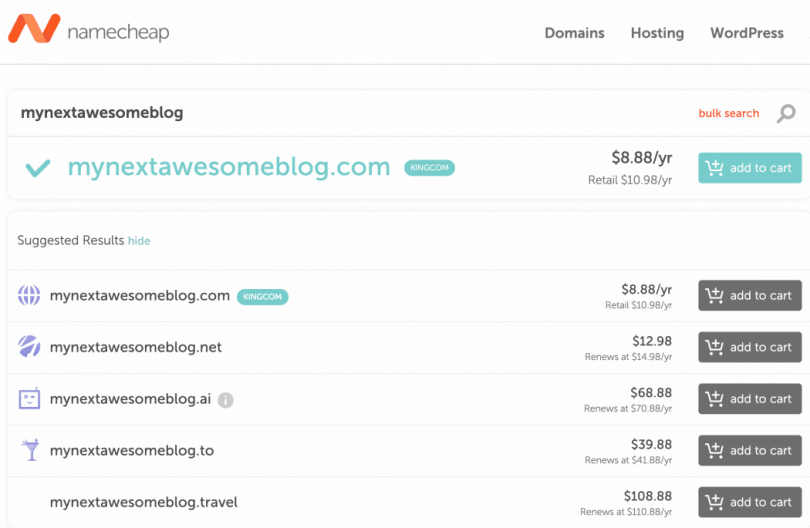
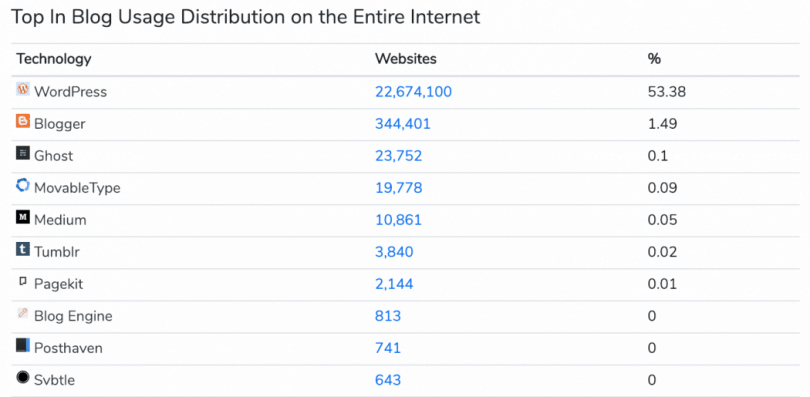
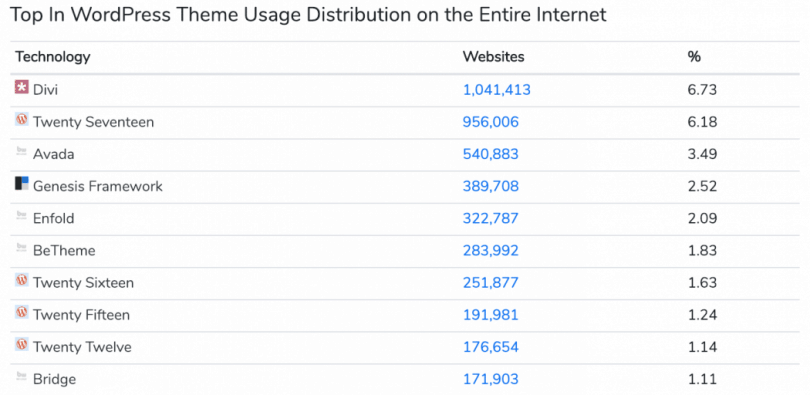
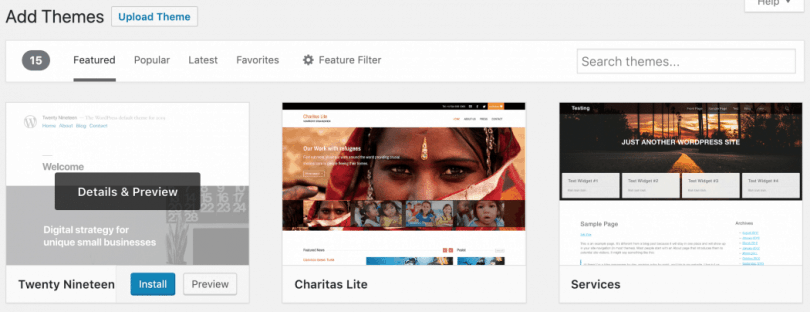
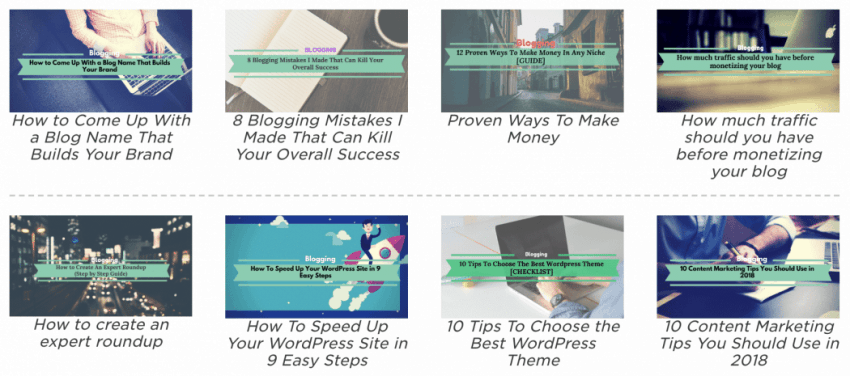

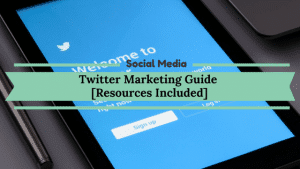
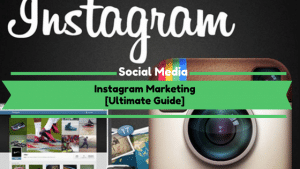
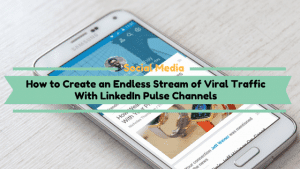
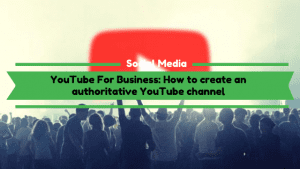








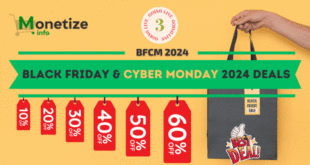

Hi that’s a great post honestly I didn’t read it entirely I just wrapped up. I need a suggestion I’m starting my personal blog so, I’m not sure what I should post on it. How and what about I write on my blog. I’m a student pursuing q degree in computer science. So I thought writing about my class work and share with my friends.
Along with I also wanted to write about blogging and SEO but is it good idea to post such stuff on my blog.
If not. Will I get any suggestions from.
Thank You
Thank you for your nice words Prawin. This guide was created so anytime in your blog creation process to come back and read what you should do. No need to read it entirely from the beginning 🙂
Before starting your blog you should think what you want to achieve from it? Want to get a job? Want to share the knowledge you get? Want to build your portfolio or you simply want to share things with your friends?!
Thanks for the suggestion and will plan accordingly. I want to get a job as well as I want to share my knowledge with my friends.
Hello Prawin,
Hows your blog going?
i am a blogger and i am trying my best to make my blogs more engaging and i agree with the blog and i am surely about to try this to my blog.
Have you seen improvements after applying our advices? I’m willing to help you succeed so let me know your blogging struggles.
The sparkling expand with enhance gadget I clearly have observed for proper clerking, accounting capabilities, like for invoicing, price range evaluation, financial analysis, education of financial announcement, record and a ways simpler and it’s miles a lot much less time overwhelming for all coins evaluation for cutting-edge modern-day and future yr in addition. That downloadable at https://www.excel-accounting-budget-analysis.com.
Not good, I’m a complete looser. I think I lost discipline in my life and don’t how to face it. And how to recover from this lose.
I’m trying to do but I’m losing interest in everything. Had no one to say or guide.
this is a test comment
Hello Prawin,
What happened mate? We all loose it at some point. Let me know if you need some guidance to put you back on track. I would love to do it.. As others did it with me some years ago when I was at a crossing path point.
Hi,
Thanks for such a detailed article about starting a blog a blog and making money out of it. Hope, you will have to change the featured image. Anyways, I did come across your recent post about starting a forum as well. And, I could see more articles on content curation, keyword research guides for 2020. Hats-off to your efforts putting in advance.
Hi Daniel,
Nice blog post. I thoroughly enjoyed reading this guide. I like your style of writing. You did not sugarcoat things about blogger. I appreciate the fact that you have explained everything about blogging in simple and straight forward way. I am sure this guide will help many people take up blogging as their career in 2020.
Thank you roundcodebox. That’s right, blogging is not a walk in the park but if done right, the results are awesome.
These are the perfect tips to start a blog and make money through blog.
Thank you Varun. I just checked your reviews website. Congrats for the work and efforts you’re putting into.
Thank you for your nice words, Aria. That’s right the featured image needs to be changed. Thanks for pointing that out. I’m glad you find our guides valuable.
This article is very helpful for my business. Thanks for sharing this informative article.
What is the role of backlinks and how much important they are for SEO of blogs and websites? Can we rank our blog posts without creating backlinks?
@Baramdat backlinks are crucial in ranking for high competitive keywords. Yes you can rank just fine for low competition keywords without backlinks by writing and promoting awesome content. The nice thing is that if you’re content is great you will start getting backlinks organically, without having to worry about building backlinks.
Thank you! I look forward to seeing more from you, this is what I need to find.
Thanks for this amazing article. You have explained everything very well. Kudos !!